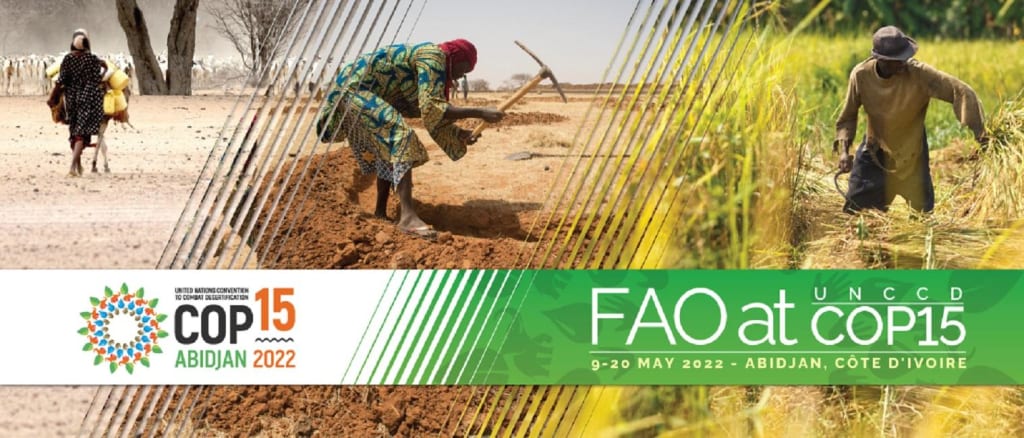
The problem of desertification
Desertification is now a non-negligible problem, with more than 20% of the Earth's fertile land degraded.
And desertification is still encroaching on other lands at a rate that is sometimes too fast to respond to.
According to United Nations statistics, 12 million hectares of fertile land are lost to desertification every year
That's 2,000 football fields of soil turning to sand every hour.
As the global population continues to grow, more food will be needed in the next 40 years than has been produced in the past 500 years combined.
As the world's most successful country in greening, China's achievements are there for all to see.
Over the decades, the hero in the desert has gradually transformed the desert into an oasis through the efforts of several generations.
Mu US SANDY LAND USED TO BE ONE OF THE WORST SANDY LAND IN OUR COUNTRY, NOW IT IS surrounded BY green WATER AND trees EVERYWHERE.
For the northwest, drought and water shortage, the desert and Gobi make life difficult for people here.
But it turns out that with sound science and consistent work, deserts can be transformed under human influence.
Although China has solved the desertification problem in many areas by returning farmland to forest or grassland, sustainable development has become an important local policy.
But in Xinjiang, there is still one of the most difficult bones to chew, the Taklimakan Desert
It is the second largest mobile desert in the world, with moving dunes covering an area of about 277,000 square kilometers, or 82% of the total desert area.
This means that it will not be easy to clean up the desert.

In addition, the average precipitation in the Taklimakan desert is 100 mm, and the lowest can reach 4-5 mm. The annual evaporation of 2,500 mm makes it difficult to retain water.
Winds blow walls of sand for hundreds of meters, easily burying any poorly protected plants.
From the Tianshan, Kunlun, Altun and Pamir Mountains of Xinjiang
The East-West Corridor is more than 1,100 kilometers long and 550 kilometers wide, covering an area of 337,600 square kilometers, half of the entire desert area of China.
And its formation also has the relatively complex factor, has the relationship with the Qinghai-Tibet Plateau to a large extent.
According to the Chinese Academy of Sciences, the Taklimakan desert has existed for at least 5.3 million years.
In the process of formation, the strata in the southwest of the desert also contained a large amount of loess moved by wind movement, which accumulated here to form the Cenozoic strata.
It is such a huge desert that makes it difficult for this part of Xinjiang to develop its economy, and also brings great difficulties to the surrounding areas.
Of course, some people say that if the Taklimakan desert can be brought down, Xinjiang will be a better place, not to mention the whole environment of China.
In other words, can our country eliminate the Taklamakan desert?
The governance of large deserts is possible
To solve this problem, we can look at the location of the entire desert, as well as the geography, including the movement of the desert.
As a mobile desert, the largest area of the Taklimakan mobile desert is located in the east of the Tarim Basin.
It is close to Gansu's Hexi Corridor, which is the key to controlling sandstorms in Xinjiang.
The problem is that this area is in the middle of a desert, with few water systems and little vegetation to hold water in.
Its northern edge is downstream of the Tarim Basin, which is also water-scarce, so it will be difficult to control.
Considering the geographical location of the desert and the characteristics of the basin, low precipitation and high annual evaporation are the main interfering factors.
Therefore, one of the main ways to control the Taklimakan desert is to divert water to the surrounding areas by building channels to reduce the dangers of flowing deserts and sandstorms.
As the saying goes, control sand first water, if not soil erosion, then how can desertification occur?
One option being discussed is to divert water from the Tibetan Plateau to the west, or from the Bohai Sea to address the drought in the north-west.
The problem with the scheme is that it would be an expensive undertaking.
Far water does not understand near thirst, not feasible in the short term.
Then we turn to Xinjiang itself. There are high mountains on the northwestern border of Xinjiang. High mountains mean abundant glacial water and precipitation.
Although Xinjiang is deep inland, the region receives more than 400 millimeters of precipitation a year, so water diversion could be considered for treatment.
In addition, the unreasonable development and use of Tarim River is also a major problem.
The extensive use of water resources leads to the cut-off of the downstream of the river, which in turn deteriorates the ecological environment of the surrounding desert.
If we can ensure the proper use of water in the region, and at the same time divert water from the northern and southern banks to the heart of the Taklimakan desert, we can reduce the desert flow.
Local water control management and diversion canal construction can reduce the influence of flowing desert to the greatest extent, so as to improve the ecological environment of flowing desert area.
In the process of sand control, we can use such methods as grass grid to solidify soil and water, and develop wind-sand shelterbelts to protect the green areas around the desert.
And this is only one part of it. There are also population activities and the rational development of the surrounding policy of returning farmland to forest, and the scientific method of desert management.
From the point of technology and reserve strength, our country has the ability to improve the environment in the Taklamakan desert, but it will undoubtedly consume a lot of national power, and the not necessarily visible to the results in the short term.
Another point is that such a huge desert, if it disappeared into grassland, is it good or bad?
At this time, someone must say, desert to grassland, this is not good? Now in the global advocate to reduce carbon emissions, protect the earth, energy saving emission reduction.
If the Taklimakan Desert is fully controlled, China will surely become the most powerful country in controlling the sand.
The role of deserts in natural systems
Before I get too carried away, deserts themselves are part of the Earth's environmental system.
Moreover, the Taklimakan desert is so vast that its impact on the environment cannot be underestimated.
A joint investigation by several organizations, including the Institute of Desert Meteorology under the China Meteorological Administration and the Taklimakan Desert Research Institute in Xinjiang, found that:
The Taklimakan desert is even more important than we thought.

In this study, desert researchers found for the first time that deserts sequester carbon dioxide through non-photosynthetic processes, and that its contribution to the total carbon dioxide exchange activity of quicksand is unexpectedly strong.
Scientists through multiple analysis instrument data collection, as well as group test results show.
Moving sand releases carbon dioxide during the day, peaking at noon, and at night, it absorbs carbon dioxide from the atmosphere and sequesters it. This effect has also been verified in the Takramakan DESERT, the Mu US DESERT and the Gurbantunggut Desert by measuring and comparing the moving sand.
Thermal fluctuations in quicksand cause soil air containing carbon dioxide to expand and contract, while salinity in sandy land controls the process of carbon dioxide release and uptake.
This explains why sand emits carbon dioxide during the day and absorbs it at night.
The scientists used further correction analysis to show that CO2 flux fluctuates in the shifting sands of the Taklimakan desert hinterland.
After the correction, the absorption effect of desert is relatively strong in the dynamic balance of release and absorption throughout the year.
If the carbon sequestration rate of river shifting sand in the hinterland is taken as a reference, and 70% of the river shifting sand area expands, then the carbon sequestration amount of river shifting sand is 1,488,500 tons per year.
This suggests that even deserts can play a positive role in mitigating climate change.
In addition, the scientists hypothesized that the global mobile desert system could sequester about 200 million tons of carbon dioxide per year, based on the average carbon sequestration rate of shifting sands in the heart of the Taklimakan desert.
But as global climate change warms, the swelling effect of temperature differences in the sand releases more carbon dioxide and holds less.
As a result, the Taklimakan desert's carbon sequestration capacity has been reduced by 0.4% per year.

Therefore, desert governance is not a one-shot deal, it needs to be looked at comprehensively.
It is possible to keep deserts in good condition, even the status quo, while managing them. As part of the natural ecosystem, deserts play a much more important role than we think.





Comments
There are no comments for this story
Be the first to respond and start the conversation.